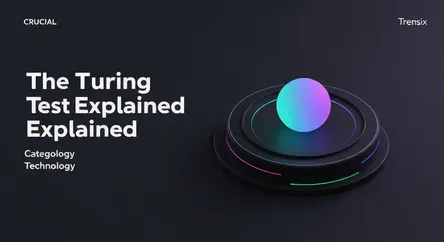Technology
The Turing Test Explained

Discover the Turing Test, the benchmark for determining if a machine can exhibit intelligent behavior indistinguishable from that of a human.
What is it?
The Turing Test, proposed by computer scientist Alan Turing in 1950, is a test of a machine's ability to exhibit intelligent behavior equivalent to, or indistinguishable from, that of a human. In the classic setup, a human evaluator engages in natural language conversations with both a human and a machine, without knowing which is which. If the evaluator cannot reliably tell the machine from the human, the machine is said to have passed the test. It doesn't test for correct answers, but rather how "human-like" the machine's responses are. It's less a formal scientific test and more a philosophical concept that has shaped the direction of AI development for decades.
Why is it trending?
The Turing Test is trending again due to the remarkable advancements in large language models (LLMs) like GPT-4 and Google's LaMDA. These AI systems can generate text that is so coherent, creative, and contextually aware that it often feels indistinguishable from human conversation. This has sparked intense debate among experts and the public about whether modern AI has finally passed, or is on the verge of passing, the Turing Test. These discussions force us to re-evaluate the test's relevance and what it truly means for a machine to be intelligent.
How does it affect people?
The implications of AI approaching or passing the Turing Test are profound. On a practical level, it powers more sophisticated chatbots, virtual assistants, and creative tools. However, it also raises significant ethical and social questions. As the line between human and machine communication blurs, it affects our trust in online interactions and the potential for misinformation. It challenges our definitions of consciousness, creativity, and what makes us uniquely human, forcing society to consider the future of human-AI relationships and the responsibilities that come with creating seemingly intelligent machines.